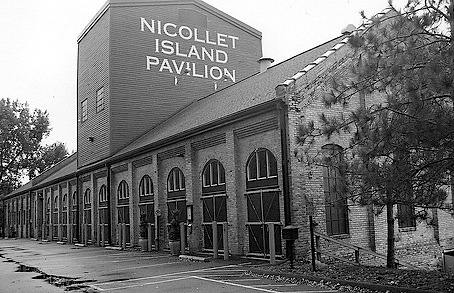The future of the 201 Building lies with the boys scouts… hopefully the 2 part deal will go through as covered by the Star Tribune
Scouts have big plans for old fort’s Drill Hall
The Northern Star Base Camp would use a 1907 hall at Fort Snelling to create an urban scout center unlike any other.
By JAMES ELI SHIFFER, Star Tribune
Last update: September 25, 2008 – 5:51 AM
The regional Boy Scout council’s plan to create an “urban base camp” at Fort Snelling promises to bring life to an empty century-old building that has cost taxpayers at least $3 million.
The current owner of Fort Snelling’s old Drill Hall, the Minneapolis Park and Recreation Board, acquired it in 2000, but its plans for a skateboard park and other uses never materialized, and the cavalry building has sat vacant and unused.
Now the Boy Scouts of America Northern Star Council hopes to close on the building in November and to open its $7.25 million complex in October 2010, the centennial of the chapter’s founding.
The urban location of the “Northern Star Base Camp” is unprecedented nationally. The council aims to reach out to city kids who haven’t grown up going to the woods, said John Andrews, the council’s scout executive. What’s more, Scouts could take the Hiawatha light-rail line there.
“This is a new foray,” Andrews said. “It’s an opportunity to make sure we’re relevant for our second hundred years.”
The 220-foot-long, red brick Drill Hall, also called the Hippodrome and the “201 Building,” is a familiar sight to those driving to the airport on Hwy. 55. It was built in 1907 to train horses to pull artillery and troops to practice cavalry dressage. Over the years, it went through other uses, including a materials testing facility for the U.S. Bureau of Mines.
The Drill Hall was vacant when the Park Board bought it and surrounding land eight years ago. The main staff member behind the project, Park Board General Manager Don Siggelkow, was at a conference this week and unavailable for an interview, said Park Board spokeswoman Dawn Sommers.
Siggelkow said in a 2006 interview that the Minnesota Wild had considered converting the building into a practice facility, but that proposal fell through.
Then a company led by Robert Naegele III, the son of the Wild’s then-owner, signed a lease with the Park Board to turn the property into a privately funded skateboard park.
Contractors put more than $1 million of work into the project before it fell apart in 2004. The contractors filed a lawsuit, Naegele’s company went out of business and the Park Board ended up paying $900,000 to settle related litigation in 2006.
At the time, Park Board members said the public ended up having to pay for what was supposed to be a privately funded project because they mistakenly trusted the Naegele name. The board put the land and the building up for sale, and in 2007, voted to give the Boy Scouts of America an option to buy the property for $4.25 million.
Arlene Fried, a longtime Park Board critic, describes the board’s experience with the property as a “monumental failure.” What was supposed to be a money-earner has instead cost somewhere close to $4 million when bond interest and legal fees are factored in, according to records obtained by Fried’s group, Minneapolis Park Watch.
Sommers disputed that figure, saying the board’s attorney calculated it at about $3 million.
Empty building, full vision
Today, the windows of the building are boarded up, and the only regular visitors appear to be the pigeons that roost on its long red roof. Inside, unfinished metal walkways from the ill-fated skateboard park overlook the vast floor of dirt.
The Boy Scouts’ vision for the Drill Hall includes a multipurpose space that will accommodate climbing walls, an indoor ropes course and room for all sorts of other activities. It will be open to all groups that want to use it, he said.
“We’ll operate it as a public facility,” Andrews said.
He said he doesn’t expect kids will camp on the site, but the trails and woods of Fort Snelling State Park are a short hike away. The council also plans to build a new building on the site that will house its offices and a scout shop, he said.
James Shiffer • 612-673-4271

